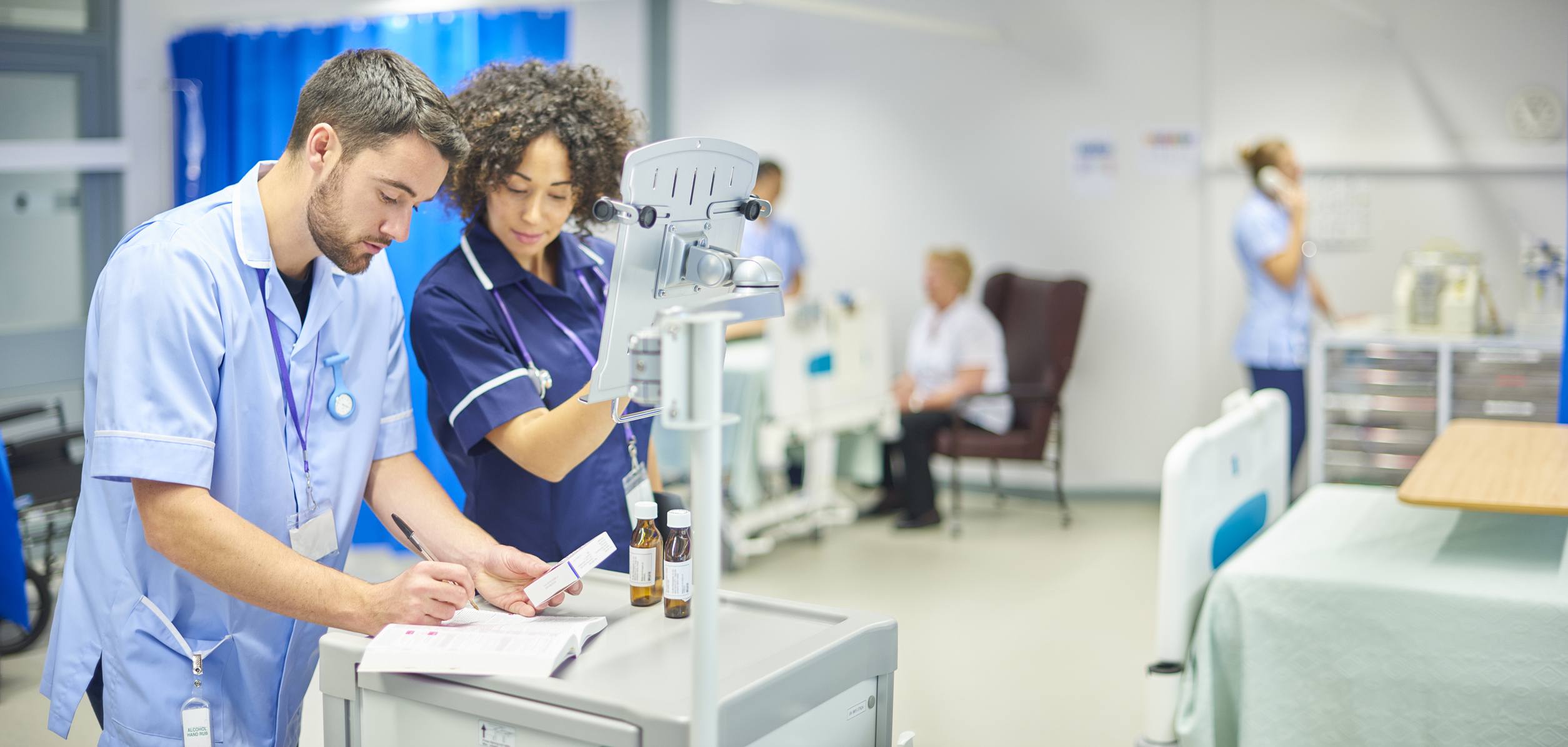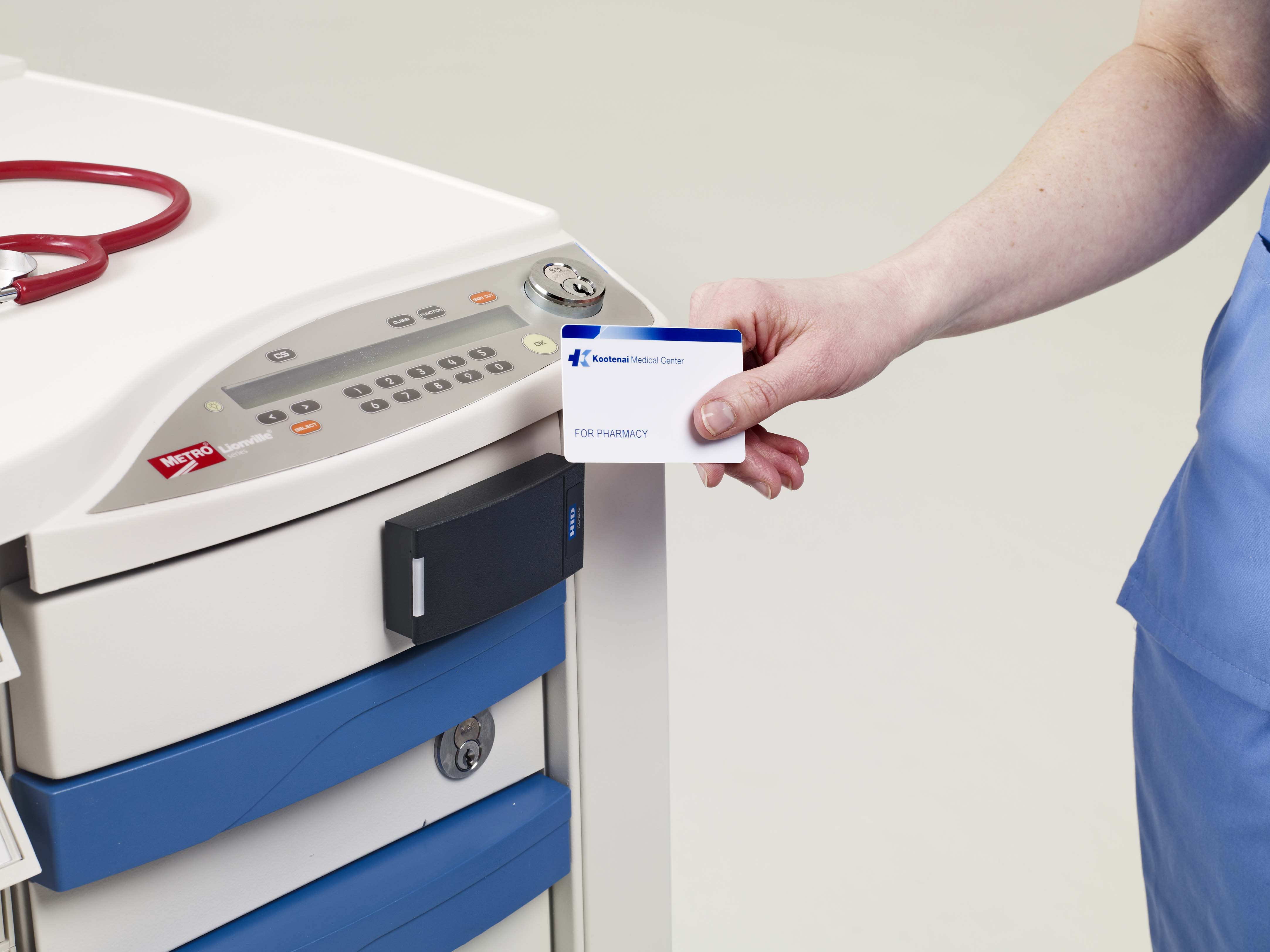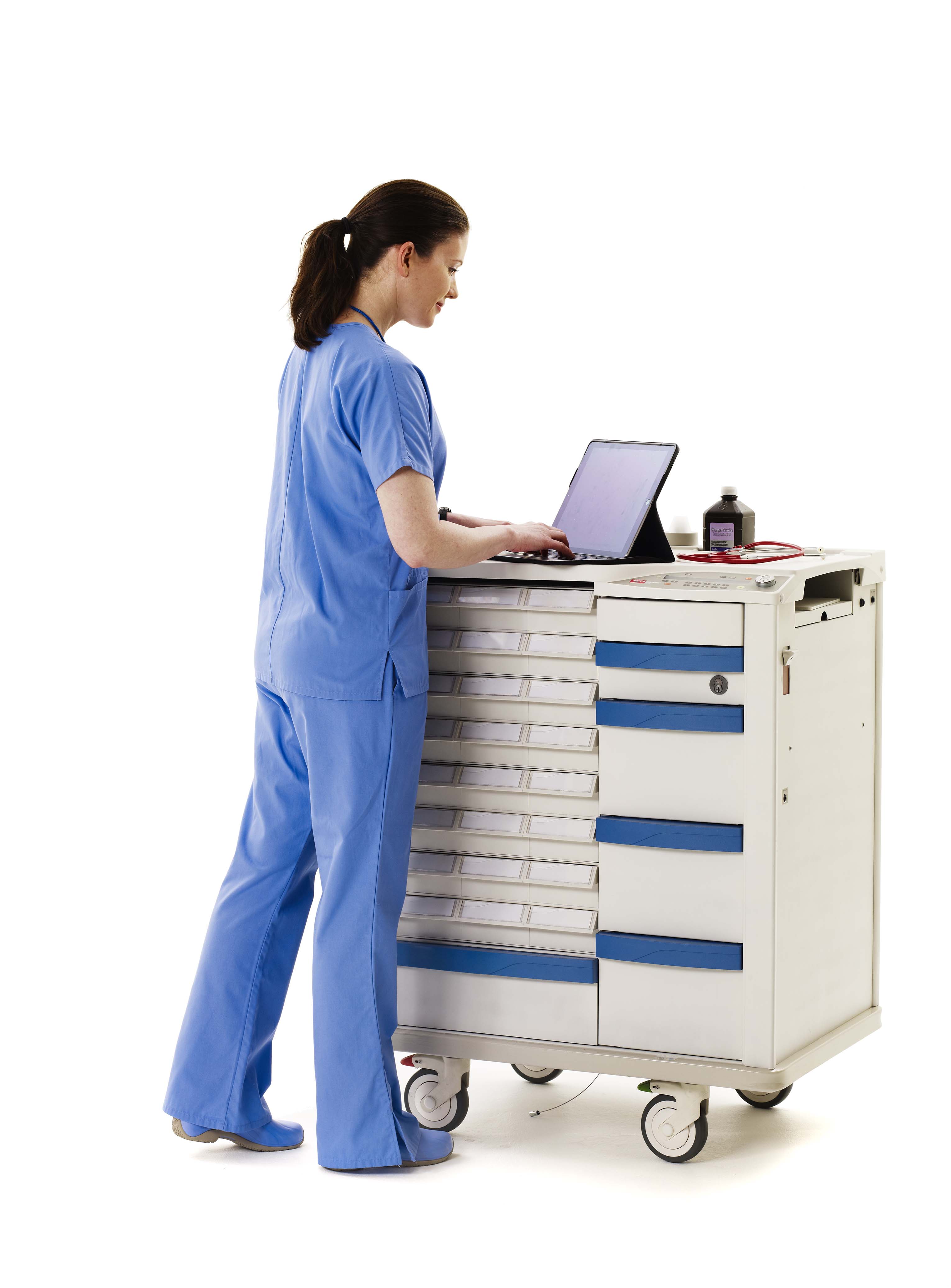The medication carts available today offer many different customization options, including, innovative security options, drawers that are designed to house a variety of products and space- saving features that limit the footprint to maintain portability. In addition,powered carts allow clinicians to use computers while administering medications; thus, giving them the ability to access the patient’s information and document electronically at the same time.

3 Tips to Improve Your Medication Cart
1. Upgrade Security with Keyless Entry Options
A electronically secured medication cart is ideal for use in any medical facility because it allows the cart to be locked using technology as opposed to physical keys; thus, eliminating concerns related to someone misplacing the keys or an employee accidentally taking them home.
Keyless entry system options:
The keyless entry touchpad system options for medication carts vary from a basic touchpad to a full-feature LCD touchpad that has auto-locking and access denied features, and can be accompanied by cart management software to manage user access and other cart settings. Some carts feature advanced locking capabilities via a patented drawer grabber that is designed to ensure that locked drawers are truly locked. Electronic touchpads can be outfitted with a card reader as well, often to utilize the clinician’s ID badge for access… providing for even more convenient access.
Some of these revolutionary medication carts have locking systems offering more than one option:
- On some carts, the tilt-out side bins, can be locked
- Double-lock drawers are also available to meet controlled substance security requirements Advanced keyless entry systems can control access to multiple double-lock drawers as well, again negating the need for a key.
- Some of the other features available on cart management software include timer adjustment for auto-lock and access denied, user access editing, audit trails and other cart settings. Convenience can be added by upgrading to a wireless touchpad to manage these features remotely, to avoid the time consuming process of finding and updating each cart directly.

2. Restock Using Interchangeable Drawers
Choose a medication cart that provided independent access to individual patient drawers. These drawers can be expected to have optional dividers to subdivide and label holders for identification. If these carts will be part of a central fill process, the drawers should be contained in an exchangeable cassette that is easily removed for transport to and from the pharmacy. A transfer cart is often part of the manufacturer’s offering. When choosing, it is important to consider the path to and from the pharmacy. If the pharmacy technician has to leave the cart unattended at any point in the process, a lockable transfer cart should be specified. Typically, there are a sufficient number of cassettes/drawers ordered to have an equal number being refilled in pharmacy as there are being used on patient floors. The size of the bins can also be a critical aspect… smaller patient drawers can provide more patient capacity per cart. However, larger drawers will hold more medications, especially for higher acuity patients, or may meet a requirement for use within the pharmacy robot or carousel
3. A Small Footprint
The size of the medication cart is dependent on how a medication cart is used. If the cart is to act as a filling station or complement to an automated dispensing cabinet, a larger cart will be desired to achieve the required capacity. In some situations, the nurse to patient ration, may dictate the use of a larger cart that may only make it to the doorway of the patient’s room. However, if the cart is going to be equipped with an onboard computer to aid in the electronic medication administration recording, the med cart footprint should be smaller for two reasons: 1. To allow the clinician to get closer to the patient, i.e. bedside 2. To offset the added weight of the accompanying power system that powers the computer, monitor, scanner, etc. Higher acuity areas should consider the use of two smaller carts vs. one larger cart in situations where the nurse will be taking it room to room. Medication carts can maintain a small footprint while still offering a substantial amount of storage space. More advanced carts provide innovative ways

To add storage without increasing the size of its footprint:
- An integrated compartment in the rear of the cart would be ideal for a trash can, additional storage or for use when incorporating technology.
- Securable side storage can be added to either side of the cart
- Dividers for supply drawers can be used to separate supplies; thus, allowing more to be stored in a single drawer. These dividers make it easy to organize the drawers, which allows clinicians to locate the correct item quickly.Custom-designed storage wells can also be created on the top of the cart, for a medication cart, consider a built-in cup dispenser, small trash container or drop in bin for the essentials.
- Additional workspace can be accomplished with a pullout worksurface or keyboard tray. These features can provide the much-needed workspace without taking up a lot of floor space on a permanent basis.
